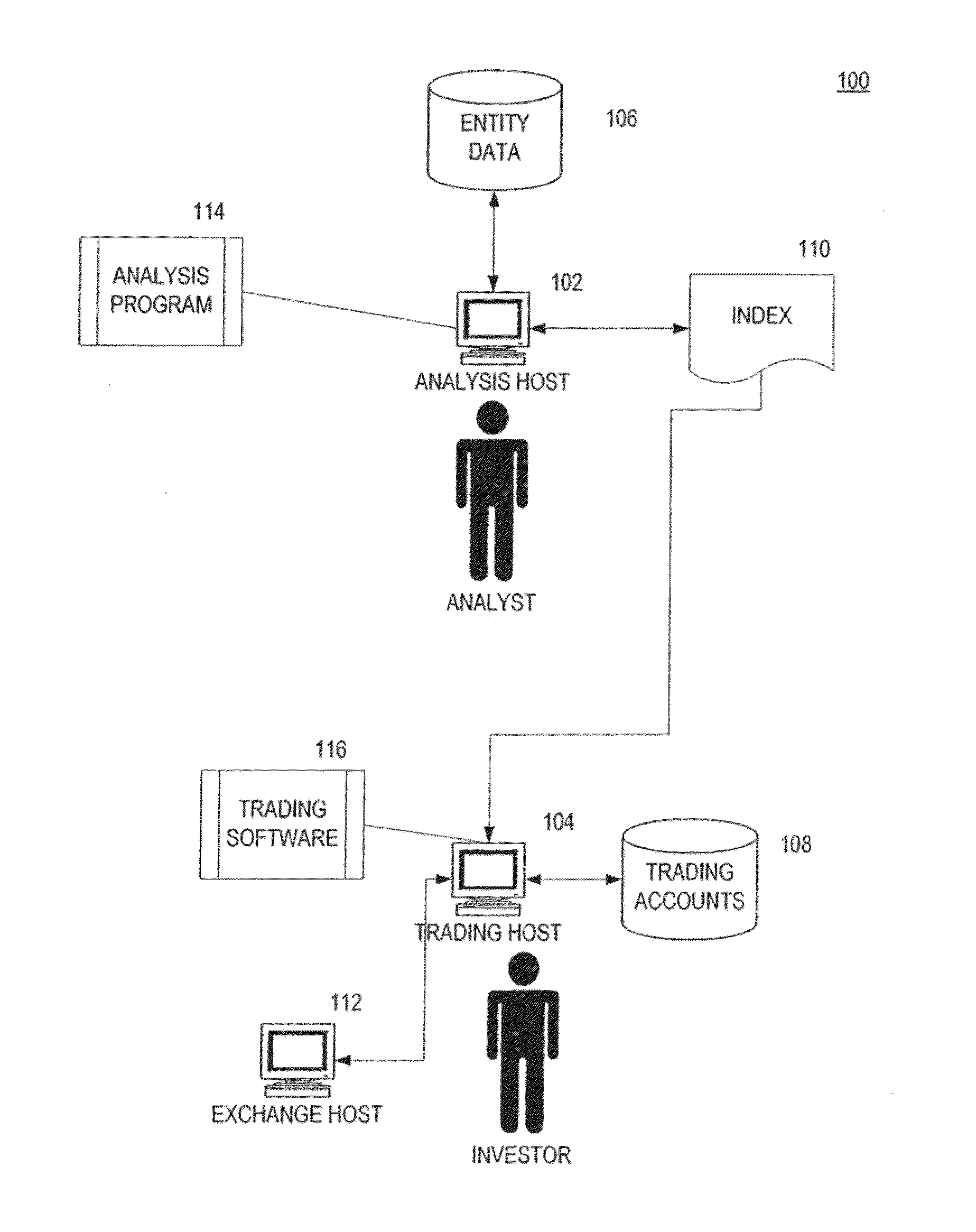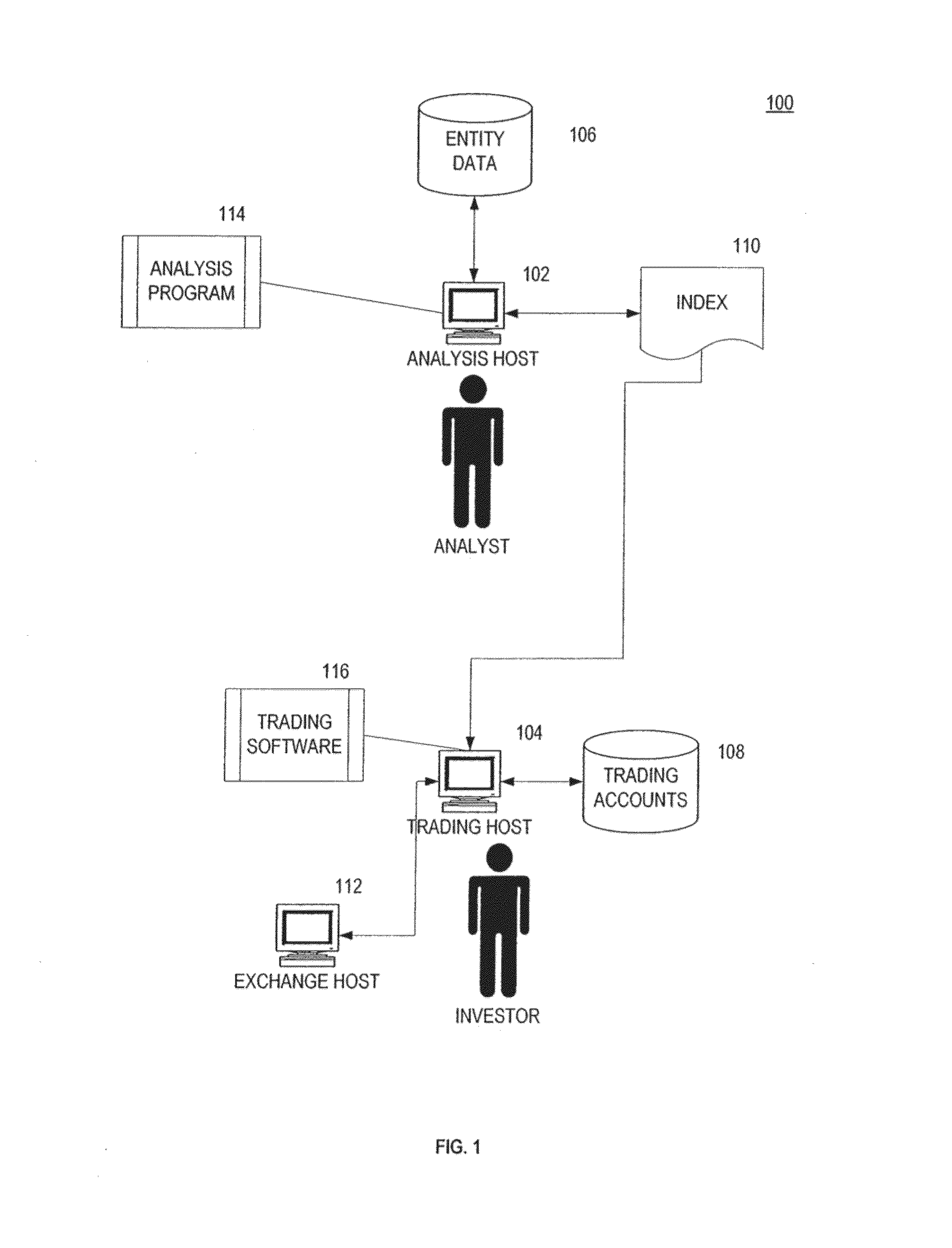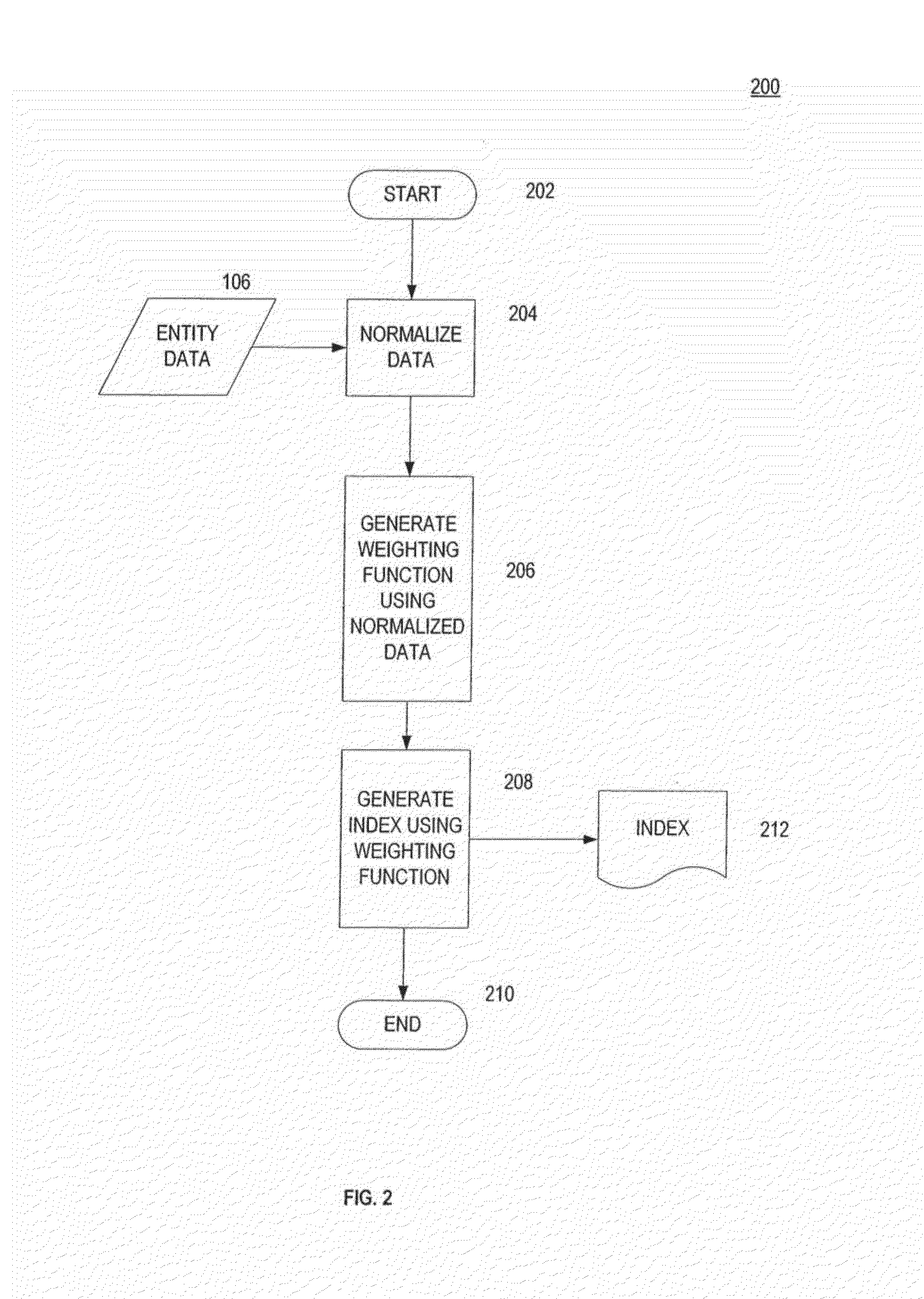Method of combining demography, monetary policy metrics, and fiscal policy metrics for security selection, weighting and asset allocation
a technology of demography and fiscal policy, applied in the field of securities investing, can solve the problems of unfavorable investment returns, unfavorable investment returns, and excess volatility of capitalization weighting passive indexes, and achieve the effect of reducing the weighting of them
- Summary
- Abstract
- Description
- Claims
- Application Information
AI Technical Summary
Benefits of technology
Problems solved by technology
Method used
Image
Examples
embodiment
[0370]Exemplary Modeled Economy Embodiment
[0371]In this exemplary embodiment, a continuous time one factor economy is modeled where stock prices are noisy proxies of informationally efficient stock values. The pricing error process is modeled as a mean-reverting process, which provides a well-defined notion of over-pricing (positive pricing error) and under-pricing (negative pricing error) in the market. In this modeled economy embodiment, cap-weighting may be a sub-optimal portfolio strategy. This is because, in a cap-weighting scheme, portfolio weights are driven by market prices. Accordingly, more weights may be allocated to overvalued stocks and less weight to undervalued stocks. It is also shown that the capital asset pricing model (CAPM) may be rejected in this one factor economy with noise. Additionally, a value tilted or size tilted portfolio may be predicted to outperform (risk-adjusted). By construction, value and size may not be risk factors in this one factor economy emb...
PUM
 Login to View More
Login to View More Abstract
Description
Claims
Application Information
 Login to View More
Login to View More - R&D
- Intellectual Property
- Life Sciences
- Materials
- Tech Scout
- Unparalleled Data Quality
- Higher Quality Content
- 60% Fewer Hallucinations
Browse by: Latest US Patents, China's latest patents, Technical Efficacy Thesaurus, Application Domain, Technology Topic, Popular Technical Reports.
© 2025 PatSnap. All rights reserved.Legal|Privacy policy|Modern Slavery Act Transparency Statement|Sitemap|About US| Contact US: help@patsnap.com



